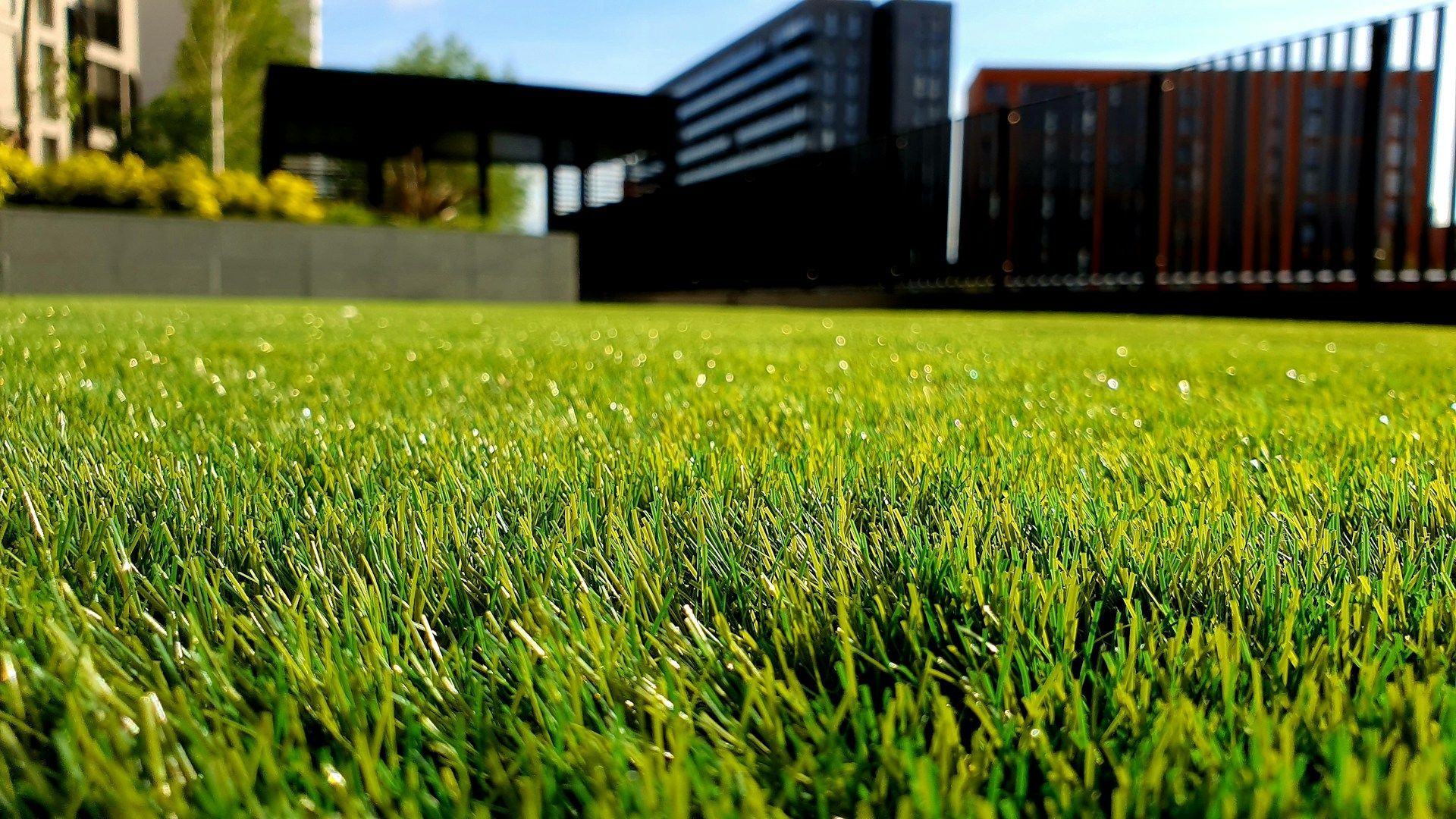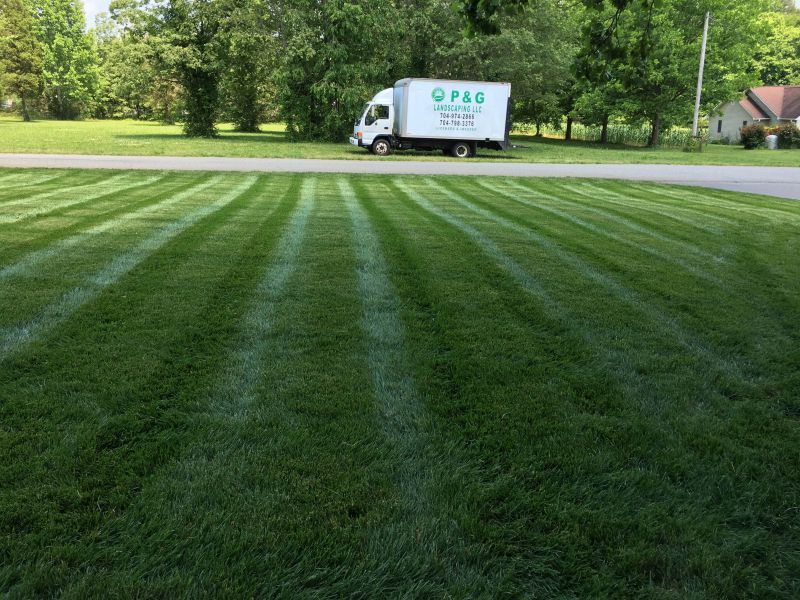When Is The Best Time To Plant Grass In NC?
When to Plant Grass in North Carolina

In Mooresville, North Carolina, where lush green landscapes and diverse climates abound, homeowners have a unique opportunity to craft beautiful outdoor spaces. Whether you're a proud local or considering a move to Mooresville, cultivating a vibrant lawn is a key aspect of landscaping. But many wonder: When's the best time to plant grass seed?
At P&G Landscaping, we're sharing our expertise on timing and essential factors for a healthy lawn.
Understanding Regional Climate
Nestled within North Carolina's humid subtropical climate, Mooresville Area experiences four distinct seasons. summers here are usually warm and humid, with temperatures frequently reaching the upper 80s and lower 90s. These pleasant conditions provide an ideal setting for outdoor pursuits and, naturally, caring for your lawn. In contrast, winters bring cooler temperatures, with daytime highs averaging in the 40s and 50s. Although severe cold is rare, occasional frost may occur during winter months.
Grass Types Tailored to the Region
Picking the right grass type is vital for your lawn's health and aesthetics in Mooresville. Luckily, this area offers a variety of grass species that thrive in its climate.
Warm-Season Grasses
- Bermuda Grass: Renowned for its heat resistance and ability to handle heavy foot traffic, Bermuda grass is a popular choice. It thrives in the warm summers and retains its green hue well into fall.
- Zoysia Grass: Another warm-season contender, Zoysia grass, excels in the region. Its dense growth makes it perfect for a luxurious, carpet-like lawn.
Cool-Season Grasses
- Tall Fescue: For those seeking a grass type that stays green year-round, even in winter, tall fescue is an excellent option. It can endure occasional cold snaps during winters.
- Kentucky Bluegrass: Although less common in this area, Kentucky bluegrass can thrive in well-maintained lawns. Its fine texture and vibrant green color are highly prized.
Choosing the right grass type involves more than personal preference; it's a strategic decision influenced by the local climate, air, and soil temperatures. Opting for the suitable grass ensures a healthy and vibrant lawn throughout the year.
The Best Time for Planting Grass Seed
Determining the best time to plant grass seed hinges on various factors, such as the grass type, existing lawn conditions, and individual preferences. Each season presents unique benefits and obstacles, underscoring the importance of evaluating your particular situation when selecting the prime time to seed for a lusher lawn.
Spring Planting
Spring is widely regarded as the optimal season to sow grass seeds in Mooresville, and for good reason. As temperatures rise and the threat of frost recedes, grasses emerge from their winter dormancy. This season typically spans from March through May, providing an excellent window for lawn care activities.
Advantages:
- Mild temperatures and longer daylight hours promote quick germination and growth.
- Spring usually brings higher moisture levels, reducing the need for excessive watering.
- Planting in spring allows your lawn to establish itself before the scorch
Drawbacks:
- Weeds are active during spring and might vie with newly planted grass seeds for resources.
- Early spring poses a risk of late frosts, potentially harming young grass seedlings.
- Timing is pivotal; planting too early when the soil remains too cold could lead to inadequate germination.
Summer Planting
In North Carolina, summer brings warm and humid weather, usually reaching its peak from June to August. This season offers plenty of sunshine and occasional rain showers, creating ideal conditions for grass to thrive. While not as typical, some choose to plant grass seed during summer for various reasons.
Advantages:
- The warm temperatures and abundant sunshine speed up grass growth.
- With fewer late frosts, young grass seedlings are less likely to be harmed.
- Your lush lawn can be enjoyed during the peak of outdoor activities.
Drawbacks:
- High summer temperatures demand meticulous watering to maintain consistent soil moisture.
- Dealing with competition from established weeds can pose a challenge.
- Neglecting proper care during the summer heat can stress young grass seedlings, rendering them more vulnerable to disease.
Early & Late Fall Planting
Autumn, from September to November, signals a transition in Mooresville. It's widely regarded as the prime season for planting new grass seedlings for various reasons. As the summer heat gradually fades, it becomes an opportune moment for cool-season grasses to thrive. Additionally, while rainfall diminishes compared to the summer, cooler temperatures prevail, providing an optimal setting for grass to take root and flourish.
Advantages:
- Cooler temperatures alleviate stress on grass seedlings and decrease the requirement for frequent watering.
- With reduced weed competition, new grass can establish itself more effortlessly.
- Planting in fall lays the foundation for a robust and healthy lawn come the following spring.
Downsides:
- The time frame for fall planting is limited, requiring precise timing to ensure grass establishment before winter sets in.
- Erratic rainfall during the fall might require additional irrigation efforts.
- While cool-season grass seed flourishes in autumn, warm-season varieties may encounter difficulties in establishing themselves.
How To Prep Your Soil
Before diving into any grass seed planting endeavor, conducting a soil test is paramount. Soil testing serves as the cornerstone for nurturing a healthy and vibrant lawn.
Here's why it's pivotal for your grass seeding agenda:
- Nutrient Assessment: Soil tests unveil the nutrient levels present in your soil, encompassing crucial elements like nitrogen, phosphorus, and potassium. Armed with this knowledge, you can make informed decisions when selecting fertilizers for your lawn.
- pH Balance: Soil pH plays a pivotal role in determining nutrient accessibility to plants. Understanding your soil's pH enables you to make necessary adjustments to create optimal conditions for grass growth.
- Customized Recommendations: Soil tests offer tailored recommendations specific to your lawn's requirements, ensuring that you utilize your time and resources efficiently without unnecessary treatments.
Techniques to Prep Soil
Effective soil preparation is crucial for ensuring the success of your grass seed planting venture.
Employ these soil preparation methods before introducing new seedlings to your existing turf:
- Initial Lawn Mowing: Kick off the process by mowing your current lawn to a low height. This action eliminates excess vegetation and facilitates better seed-to-soil contact during planting.
- Aeration: Enhance water penetration and nutrient absorption in the grass's root system by aerating the soil. Utilize a lawn aerator to create small perforations in the soil.
- Soil Amendments: Modify the soil with suitable materials based on the results of your soil test. For instance, if your soil lacks vital nutrients, consider applying lawn fertilizers. Adjust the soil's pH, if necessary, using lime or sulfur.
- Raking: Following aeration and soil amendment, rake the soil to establish a smooth and level surface. Clear away any debris or rocks that may impede grass seed germination.
- Seed Distribution: Adhere to the recommended seeding rate for your chosen grass type, ensuring even distribution of the seeds across the prepared soil.
- Mulching: Apply a thin layer of straw or mulch over the seeded area to retain moisture and shield the seeds from birds and wind.
- Watering: Gradually water the seeded area, maintaining consistent soil moisture levels without causing water-logging. Typically, light daily watering suffices until the growing lawn establishes itself.
Contact a Professional To Do It For You
Transform your outdoor space with lush, vibrant grass by taking action today and investing in professional seed planting services offered by P&G experts. Our team is equipped with the knowledge, skills, and resources to ensure the success of your grass seed planting project. With meticulous attention to detail and a commitment to excellence, we will handle every aspect of the process, from soil preparation to seed distribution and watering. Let us help you achieve the lush, healthy lawn you've always desired. Contact us now to schedule your consultation and take the first step towards a greener, more beautiful landscape. (704-931-5700)
Sources:
Landscaping, FortSmith. “Is It Too Late to Plant Grass Seed in NC? Key Factors to Consider.” FortSmith Landscaping, Sept. 2023, fortsmithlandscaping.com/blog/is-it-too-late-to-plant-grass-seed/.
Contact Information
Trading Hours
- Monday
- -
- Tuesday
- -
- Wednesday
- -
- Thursday
- -
- Friday
- -
- Saturday
- Closed
- Sunday
- Closed




